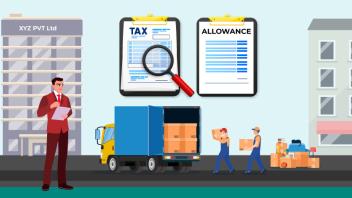Go Green: Top 9 Tips for an Eco-Friendly Relocation

As environmental concerns continue to grow, many people are seeking ways to reduce their ecological footprint and make a positive impact on the planet. One such opportunity arises when it's time to move to a new home. Relocating can generate a significant amount of waste and consume resources, but with a little planning and effort, you can make your move more sustainable and eco-friendly.
In this blog, we will share the top 10 tips and practices for an environmentally conscious moving experience that not only benefits the Earth but can also save you time and money.
{"preview_thumbnail":"/sites/default/files/styles/video_embed_wysiwyg_preview/public/video_thumbnails/0PoUkpM9mlM.jpg?itok=YguI43Ad","video_url":"https://youtu.be/0PoUkpM9mlM","settings":{"responsive":1,"width":"854","height":"480","autoplay":1},"settings_summary":["Embedded Video (Responsive, autoplaying)."]}
1. Declutter Before You Move
Before you begin packing, it's crucial to declutter your home and get rid of items you no longer need. This will not only make your move more manageable but also reduce the number of boxes and packing materials needed. You can donate, sell, or recycle your unwanted items to minimize waste.
2. Choose Reusable Packing Materials
Instead of purchasing new cardboard boxes and bubble wrap, opt for reusable packing materials such as plastic containers, suitcases, or laundry baskets. You can also use towels, blankets, and clothing to protect your belongings during transportation. This practice will reduce the amount of waste generated during your move.
3. Rent Eco-Friendly Moving Trucks
When selecting a moving truck, choose a right-sized truck to minimize fuel consumption and reduce emissions. Opt for trucks with low-emission engines or those that run on biodiesel or other eco-friendly fuels. This practice will help you contribute to a greener environment.
4. Pack Smartly
Efficient packing can significantly reduce the number of boxes and materials used. Follow room-by-room packing tips to ensure that you pack your belongings systematically and use the least amount of packing materials. Don't forget to label your boxes for easy unpacking and organization at your new home.
5. Use Energy-Efficient Appliances
When moving to a new home, it's an excellent opportunity to upgrade your appliances to more energy-efficient models. Replace old and energy-consuming appliances with new, energy-saving alternatives. This will not only save you money in the long run but also help reduce your environmental impact.
6. Recycle Packing Materials
After your move, make sure to recycle any packing materials that cannot be reused, such as cardboard boxes or bubble wrap. Check with local recycling centers for proper disposal methods and ensure that you're doing your part to minimize waste.
Also read: Eco-Friendly Packing Solutions
7. Offset Your Carbon Footprint
To further minimize the environmental impact of your move, consider offsetting your carbon footprint by donating to a reputable environmental organization or investing in renewable energy projects. This will help counter balance the emissions generated during your move and contribute to a healthier environment.
8. Optimize Utility Usage
When settling into your new home, consider optimizing your utility usage by installing energy-efficient light bulbs, using a programmable thermostat, and unplugging electronics when not in use. These simple changes can significantly reduce your energy consumption and contribute to a greener lifestyle.
9. Plant Trees and Maintain a Green Space
Finally, don't forget the importance of maintaining a green space around your new home. Plant trees, create a garden, or add potted plants to your balcony or terrace. This not only helps improve air quality but also contributes to a more eco-friendly and aesthetically pleasing living environment.
Conclusion
By incorporating these top 9 eco-friendly moving tips and practices, you can significantly reduce the environmental impact of your move and contribute to a more sustainable future. Remember, every small action counts, and by making conscious choices, you can create a positive change for our planet.











